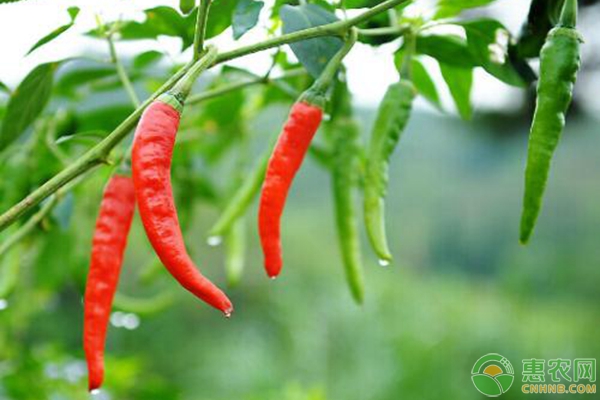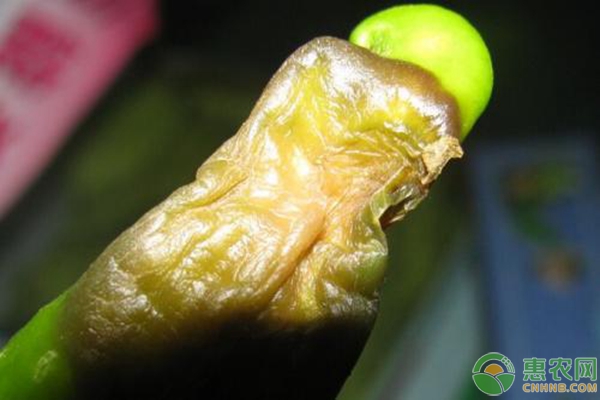Capsicum is a common seasoning vegetable planting variety in China. The prospect of pepper planting is good, but in the process of planting, it often encounters disease intrusion. The following is a series of common problems and prevention measures that are easy to occur in the whole growth period of pepper. I hope to be helpful. Classified by plant performance symptoms 1, dead seedlings 1. Symptoms: The growth and development of the seedlings is sluggish, the seedlings are thin, the leaves are yellow, the stems are thin and hard purple, and the seedling age is not large, but it looks like the old seedlings, so it is called "small old seedlings". 2. Reasons for occurrence: 1 The seedbed temperature is low, especially the soil temperature is low. 2 The soil weight of the nursery bed, the small amount of organic fertilizer applied or the low fertility (especially the lack of nitrogen, phosphorus and potassium fertilizer) or the soil drought or soil moisture or poor soil ventilation, the poor absorption capacity of the roots or the continuous rain and rain after colonization will occur. . 3 improper preparation of nutrient soil. Application of unfertilized farmyard manure or organic fertilizer that is not sufficiently mixed with chemical fertilizer causes rooting or soil solution concentration to be too high. 4 When the seedling age is too long or the root system is damaged during the colonization process or the roots are overhanging, the roots are not in close contact with the soil, and the gas is injured. 5 underground pests and diseases endanger the roots. 3. Control measures: 1 Choose loose soil, well-ventilated garden soil or paddy soil for nutrient soil, while paying attention to the application of organic fertilizer, large and medium micronutrients to provide a good environment for roots. 2 Improve the nursery environment, and use geothermal wire to increase the ground temperature. 3 timely colonization, high sorghum deep ditch when planting, pay attention to refining before transplanting. 4 can spray anti-reverse on the foliar surface, and timely control pests and diseases. 2, Chang Miao 1. Symptoms: The growth is a common growth and development disorder in the seedling stage. The seedling stalks are fine and high, with long sections, yellowish green stems, soft leaves, thin yellow and thin roots. 2. Causes of the disease: 1 Nitrogen fertilizer is applied too much, and phosphorus and potassium fertilizers are insufficient. 2 Seeding density or seedling density is too large or the seedlings are not timely. 3 seedbed or greenhouse temperature is high, soil or air humidity is high. 4 The rainy days are too long or the light is insufficient to form a long seedling. 3. Control measures: 1 Re-application of organic fertilizer, less application of nitrogen fertilizer in the early stage, pay attention to the combined application of phosphorus, potassium and micro-fertilizer, is the most fundamental measure to prevent and control. 2 Reasonably regulate humidity and temperature, and implement variable temperature management. When the light is insufficient, the time for uncovering the film should be extended. 3 and time seedlings, reasonable planting when seedlings. 4 timely pruning, topping, artificial pollination and other measures to inhibit vegetative growth and promote reproductive growth. 5 Cut off part of the fibrous roots to inhibit vegetative growth. 6 There is a phenomenon of long-term treatment with chlorophyll or gold green garden, sprayed twice in the seedling stage, can control the length, increase the stem thickness, and promote root development. Watering the seedbed is prohibited within 1-2 days of treatment. 3, root 1. Symptoms: At the beginning of the roots, the leaves of the seedlings became thinner, the sun was wilted after the sun was shining, the leaves were burnt, and the whole plant was dead, and the diseased seedlings were easily pulled out from the soil. The seedlings do not produce new roots for a long time, and the roots are less or not at all. The original root bark is yellowish and rusty and gradually decays. 2. Causes of the disease: 1 low temperature, low soil organic matter content, excessive humidity and lack of oxygen. 2 bed temperature is lower than 12 °C for a long time, or insufficient light hinders the normal development of the root system, and the root system gradually browns and dies. 3 The amount of organic fertilizer applied is small, and the concentration of the soil solution is too high to cause roots. 4 The application of farmyard manure is not fully decomposed or the seedbed soil and chemical fertilizer are mixed unevenly to cause roots. 3. Control measures: 1 Use sterile fertile seedbed soil and add organic fertilizer with phosphorus, potassium and micro-fertilizer. 2 After the emergence of seedlings, do a good job of ventilation and dehumidification, and sprinkle fine soil or grass ash to reduce the humidity of the seedbed. 3 Measures such as adding organic fertilizer and laying underground hotline to increase ground temperature, increase permeability, and cultivate strong seedlings. 4 For seedlings with light roots, the seedlings can be loosened, soiled with dry soil and grass ash to increase temperature and reduce moisture, and promote their growth. 4, the blade is twisted 1. Symptoms: It is mainly manifested in the upper part of the plant. When the disease occurs, the growth and development of the plant stops, the petiole and veins are hardened, it is easy to break, the leaves are twisted, and the flower buds fall off. 2. Causes of the disease: 1 The temperature is low and the blade is twisted by freezing. 2 Boron deficiency in plants: low soil organic matter content, boron is easily lost in soil; or excessive application of potassium fertilizer to inhibit the absorption of boron by plants. 3 The soil is dry or the humidity is too high or the organic matter content is low or continuous high temperature and other conditions cause the absorption of boron to cause distortion of the blade. 3. Control measures: 1 Add organic fertilizer to enhance soil water retention and fertilizer retention and increase boron utilization. 2 spraying boron fertilizer, when there is a deficiency of boron in the growth period, 3 Add organic fertilizer to prevent soil acidification or alkalization. 4 regulate temperature and humidity, adhere to a small number of fertilizer and water management principles. 5, sunburn cause: 1 calcium deficiency in the soil or excessive application of nitrogen fertilizer, causing calcium absorption disorders. 2 The pepper plant was too shallow, and the result was overdone, causing the fruit to be exposed to strong light and causing burns. 3 There are drops of water or dew on the pepper fruit to gather sunlight. 4 soil drought and water shortage, temperature is too high, the weather is fine after rain, soil viscosity, low water accumulation, virus disease, mites, mites and other hazards, or planting too thin and other factors can cause the occurrence of Japanese rot. 6, umbilical rot Causes: 1 The main cause of the onset of pepper umbilical rot is calcium deficiency. 2 soil salt content is low, acidification, especially in sandy soils, insufficient calcium supply. 3 In the salinized soil, although the soil contains more calcium, due to the high concentration of soil soluble salts, the roots are hindered by the absorption of calcium and calcium deficiency. 4 application of ammonium nitrogen fertilizer or excessive potassium fertilizer will also hinder the absorption of calcium by plants. In addition, in the case of soil drought, air drying, continuous high temperature, due to large transpiration, insufficient water supply, or drought and humidity, the root water of the pepper is blocked, and the original water in the fruit is absorbed by the leaves, resulting in a large loss of water. It is prone to a large amount of umbilical cord fruit. 7, deformation fruit During the growth of pepper, due to the deterioration of the growth environment, the pepper fruit is often deformed and discolored, which affects the quality of the product. 1. Causes of the disease: 1 Fertilization is incomplete or not fertilized. 2 The flower bud differentiation period or flowering period temperature is too high or too low. 3 in the growing season lack of potassium, calcium, boron. 4 The fruit moisture in the fruit expansion period changes drastically or the ground temperature continues below 15 °C or the soil is dry or the water supply is insufficient or the temperature difference between day and night is too large to form a deformed fruit. 5 During the fruit expansion period, in the case of continuous low temperature, some chlorophyll is replaced by anthocyanin, which causes the color of the fruit to turn purple. 6 The pepper formed under high temperature conditions suddenly encounters drought, which will make the wax on the surface of the fruit unable to form, and the fruit will be dark green and dull. 2. Control measures: 1 Reasonable and appropriate temperature and humidity regulation, especially in the flowering and fruiting period. 2 Strengthen fertilizer and water management, re-apply organic fertilizer, and NPK fertilizer, spray mad titanium fertilizer and mad calcium fertilizer 3 Reasonable watering, adhere to a small number of times, the principle of fertilizer and water. The above are the common diseases and control measures in the process of pepper planting production compiled by Huinong. Xiaojiao growers must master the causes of the above diseases and take preventive measures in advance. We are a specialized manufacturers of Animal Health Raw Materials from China; We support Animal Feed Additive, Animal Insecticidal ingredients, Xylazine Powder, Annatto Seed Extract and so on. With advanced R & D and manufacturing in Animal Health Raw Materials. With high-quality products of Animal Health Raw Materials, we can be a trust suppliers / factory. As a wholesale of Animal Health Raw Materials, we have the perfect after-sales service and technical support. Look forward to your cooperation! Animal Feed Additive,Animal Insecticidal ingredients,Pond Sterilization,Xylazine Powder,Annatto Seed Extract Xi'an Quanao Biotech Co., Ltd. , https://www.quanaobio.com

